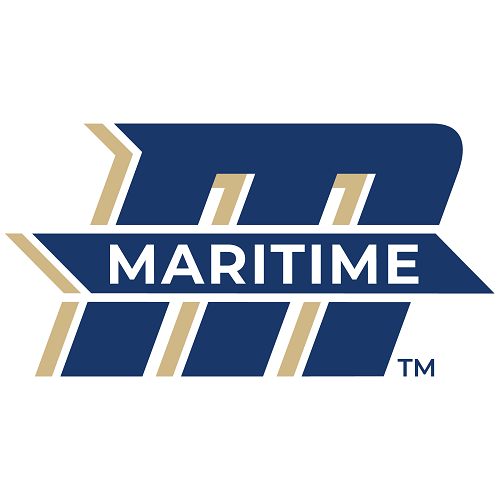Course Description
This course is intended to provide the knowledge required for seafarers with designated security duties in connection with a Ship Security Plan (SSP) to perform their duties in accordance with the requirements of Chapter XI-2 of SOLAS 74 as amended, the ISPS Code, and Section A-VI/6 and Table A-VI/6-2 of the STCW Code, as amended.
This course also provides minimum standard of competence in elementary first aid (Table A-VI/1-3). A component of Basic Safety Training certification. Also provides American Red Cross First Aid/CPR certification.
This course consists of six 2-hour classes.
STCW Objectives
Demonstrate knowledge and understanding of the following STCW elements:
- OICNW-C8.3 Knowledge of elementary first aid
- OICEW-D8.3 Knowledge of elementary first aid
- BFA-X1.1 Assessment of needs of casualties and threats to own safety
- BFA-X1.2 Appreciation of body structure and functions
- BFA-X1.3 Apply appropriate measures in event of burns and scalds, including accidents caused by electric current
- BFA-X1.3 Apply appropriate measures of basic shock management
- BFA-X1.3 Apply resuscitation techniques
- BFA-X1.3 Control bleeding
- BFA-X1.3 Improvise bandages and use materials in the emergency kit
- BFA-X1.3 Position casualty
- BFA-X1.3 Rescue and transport a casualty
- SCRB-X5.1 Use of the first-aid kit and resuscitation techniques
- SCRB-X5.2 Management of injured persons, including control of bleeding and shock
- VPDSD-X1.1 Working knowledge of maritime security terms and definitions
- VPDSD-X1.2 Knowledge of international maritime security policy and responsibilities of Governments, companies and persons
- VPDSD-X1.3 Knowledge of maritime security levels and their impact on security measures and procedures aboard ship and in the port facilities
- VPDSD-X1.4 Knowledge of security reporting procedures
- VPDSD-X1.5 Knowledge of procedures and requirements for drills and exercises under relevant conventions, codes and IMO circulars
- VPDSD-X1.6 Knowledge of the procedures for conducting inspections and surveys and for the control and monitoring of security activities specified in a ship security plan
- VPDSD-X1.7 Knowledge of security-related contingency plans and the procedures for responding to security threats or breaches of security
- VPDSD-X2.1 Knowledge of security documentation, including the Declaration of Security
- VPDSD-X2.2 Knowledge of techniques used to circumvent security measures
- VPDSD-X2.3 Knowledge enabling recognition of potential security threats
- VPDSD-X2.4 Knowledge enabling recognition of weapons, dangerous substances and devices and awareness of the damage they can cause
- VPDSD-X2.5 Knowledge of crowd management and control techniques
- VPDSD-X2.6 Knowledge in handling security-related information and security-related communications
- VPDSD-X2.7 Knowledge of the methods for physical searches and non-intrusive inspections
- VPDSD-X3.1 Knowledge of the techniques for monitoring restricted areas
- VPDSD-X3.2 Knowledge of controlling access to the ship and to restricted areas on board ship
- VPDSD-X3.3 Knowledge of methods for effective monitoring of deck areas and areas surrounding the ship
- VPDSD-X3.4 Knowledge of inspection methods relating to the cargo and ship’s stores
- VPDSD-X3.5 Knowledge of methods for controlling the embarkation, disembarkation and access while on board of persons and their effects
- VPDSD-X4.1 General knowledge of various types of security equipment and systems
- VPDSD-X4.2 Knowledge of the need for testing, calibrating, and maintaining security systems and equipment, particularly whilst at sea
Demonstrate proficiency in the following skills:
- EFA-4B4B Demonstrate opening of the airway and checking for breathing
- EFA-4B4D Demonstrate action for an unresponsive person who is not breathing
- EFA-4B4E Demonstrate the procedure for determining if a patient has a pulse
- EFA-4B4F Demonstrate proper hand placements for chest compressions
- EFA-4B4G Demonstrate proper CPR compressions for two minutes
- EFA-4B4H Demonstrate actions for a conscious adult with airway blockage
- EFA-4B4I Demonstrate actions for an unconscious adult with airway blockage
- EFA-4B5A Demonstrate proper bleeding control techniques
- EFA-4B8C Demonstrate immobilizing a fracture using splints and ties
- EFA-4B8D Demonstrate preparing patient for spinal immobilization
- EFA-4B9A Demonstrate bandaging technique for wound treatment
Topics
VPDSD
- Introduction
- Publications and references
- Maritime security threats
- Recognition of dangerous substances and devices
- Characteristics of persons who are likely to threaten security
- Security related communications
- MARSEC
- Vessel security plan
- Responses to security incidents
- Security equipment
- Techniques used to circumvent security measures
- Inspection, control, and monitoring techniques 13 The TWIC program
- Physical screening
- Crowd management and control
CPR/First Aid
- Before Giving Care
- Disease transmission and prevention
- Taking Action: Emergency Action Steps
- Checking an unconscious person
- Incident stress
- Cardiac Emergencies, CPR and AED
- Background: when the heart suddenly fails
- Heart Attack and Cardiac Arrest
- How to perform Cardiopulmonary Resuscitation
- How and when to use an AED, including precautions
- Breathing Emergencies
- Respiratory Distress and Respiratory Arrest
- Choking
- How to assist a conscious choking adult
- How to assist an unconscious choking adult
- First Aid
- Sudden illness, including heat and cold related emergencies, and lightening injuries
- Bites, stings, and poisonous plants
- Wounds and Burns
- Injuries to muscle, joints and bones
- Asthma
- Anaphylaxis and epinephrine auto- injectors
- Special situations
